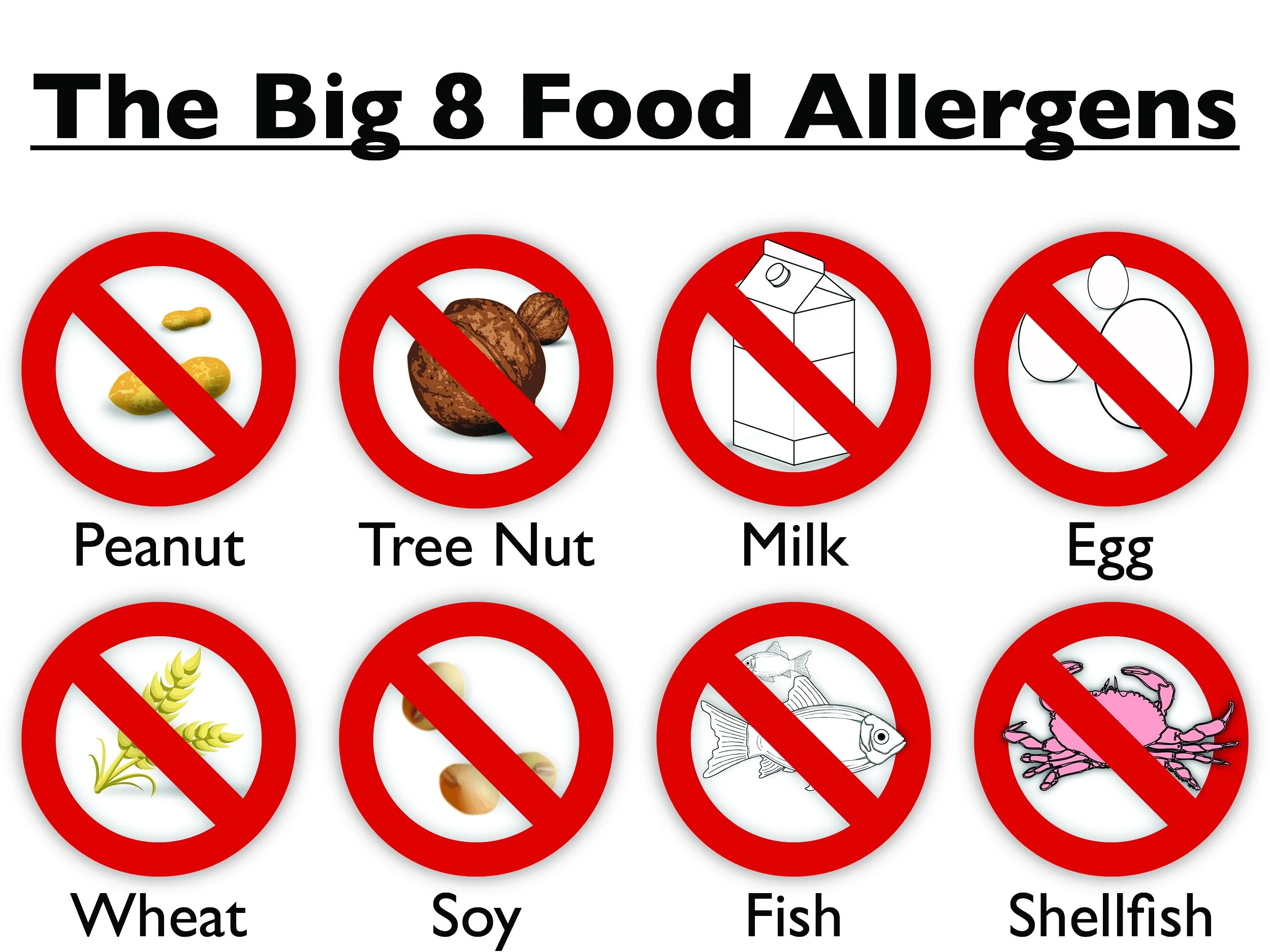Food Allergies and Intolerances
With numerous shared holiday meals on the horizon, it seems like an appropriate time to go over the basics of food allergies and intolerances. From peanuts and tree nuts to dairy and eggs – one person's favorite food can be seriously life threatening to another. Taking the time to understand food allergies and the potential reactions that could arise from exposure could even save a life.
As many as 15 million Americans have food allergies, including one in every 13 children, and that number is growing each year, although the cause is uncertain. Every 3 minutes someone is admitted to the emergency room due to a food allergy reaction, resulting in over 200,000 E.R. visits each year. Exposure to a food allergen can result in a mild response, like an itchy mouth or hives, or it can result in a severe reaction, like trouble swallowing or anaphylaxis. Anaphylaxis is a state of shock induced by a severe allergic reaction and can result in death without immediate medical attention. The most likely cause of anaphylaxis tends to be food allergies, although bee stings and other allergens can also induce this reaction.
Eight foods are responsible for 90% of food allergies, but almost any food could cause an allergic reaction. The big eight food allergens are: peanuts, tree nuts, milk, egg, wheat, soy, fish, and shellfish. Even the tiniest amount of an allergen can cause a reaction, and the only known way to avoid an allergic reaction is to avoid exposure to that particular food. For those at risk of anaphylaxis when exposed to an allergen, the medication epinephrine is prescribed, and should be given at the first sign of exposure. After a severe reaction, immediately seek medical treatment even if symptoms appear to diminish once the epinephrine injection is given.
Symptoms of exposure vary – not only from person to person or allergen to allergen, but even from one reaction to the next reaction in a single individual. A person can develop food allergies at any age, but they are most likely to surface during childhood. Those with a family history of any type of allergy are at a higher risk for food allergies. While milk, egg, and soy allergies are sometimes outgrown after childhood, peanut, tree nut, fish, and shellfish allergies tend to persist for a lifetime.
It is important to note that there is a difference between an allergy and an intolerance. With a food allergy, the immune system mistakes a food protein as a threat and launches an attack. The immune system responds to the threat by releasing large quantities of an antibody called immunoglobulin E (IgE). The IgE antibodies release histamine and other substances which cause the reaction – IgE is the antibody responsible for anaphylaxis. Food intolerances may cause the same symptoms as a food allergy, but an intolerance (with the exception of celiac disease) does not involve the immune system, and can not cause anaphylaxis. Lactose intolerance is one of the most common types of intolerance, and is the result of the small intestine not producing enough of the lactase enzyme, thus the individual is unable to digest lactose, the naturally occurring sugar in dairy products. With celiac disease, there is an immune reaction in the small intestine in response to the presence of gluten, or the protein found in wheat. But celiac disease is considered a digestive disease rather than a food allergy, because the immune response does not involve IgE and therefore there is no risk of anaphylaxis.
If you or someone close to you suspects a food allergy, consult your doctor or a board-certified allergist. Medical professionals have several diagnostic tests available: a skin prick test, a blood test, an oral food challenge, and a trial elimination diet. Your doctor will order the appropriate test based on your family and medical history. For more information regarding diagnosis, treatment, and research of food allergies and intolerances, consult FARE (Food Allergy Research & Education) or the American College of Allergy, Asthma & Immunology. If you have been diagnosed with a food allergy or intolerance and are having trouble finding foods that are safe for your consumption, there are many online resources available, and your local Co-op offers a variety of allergy-friendly foods.

